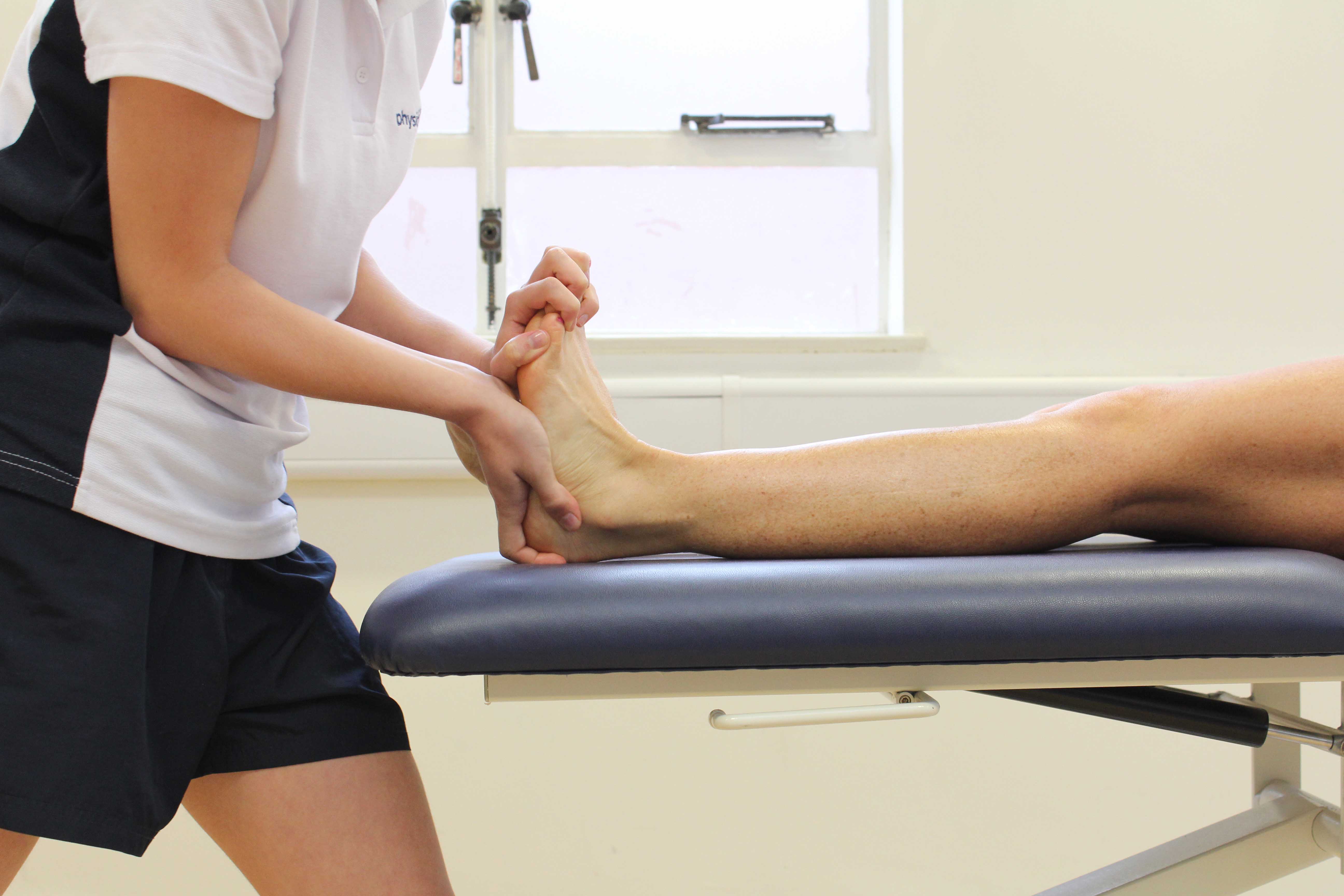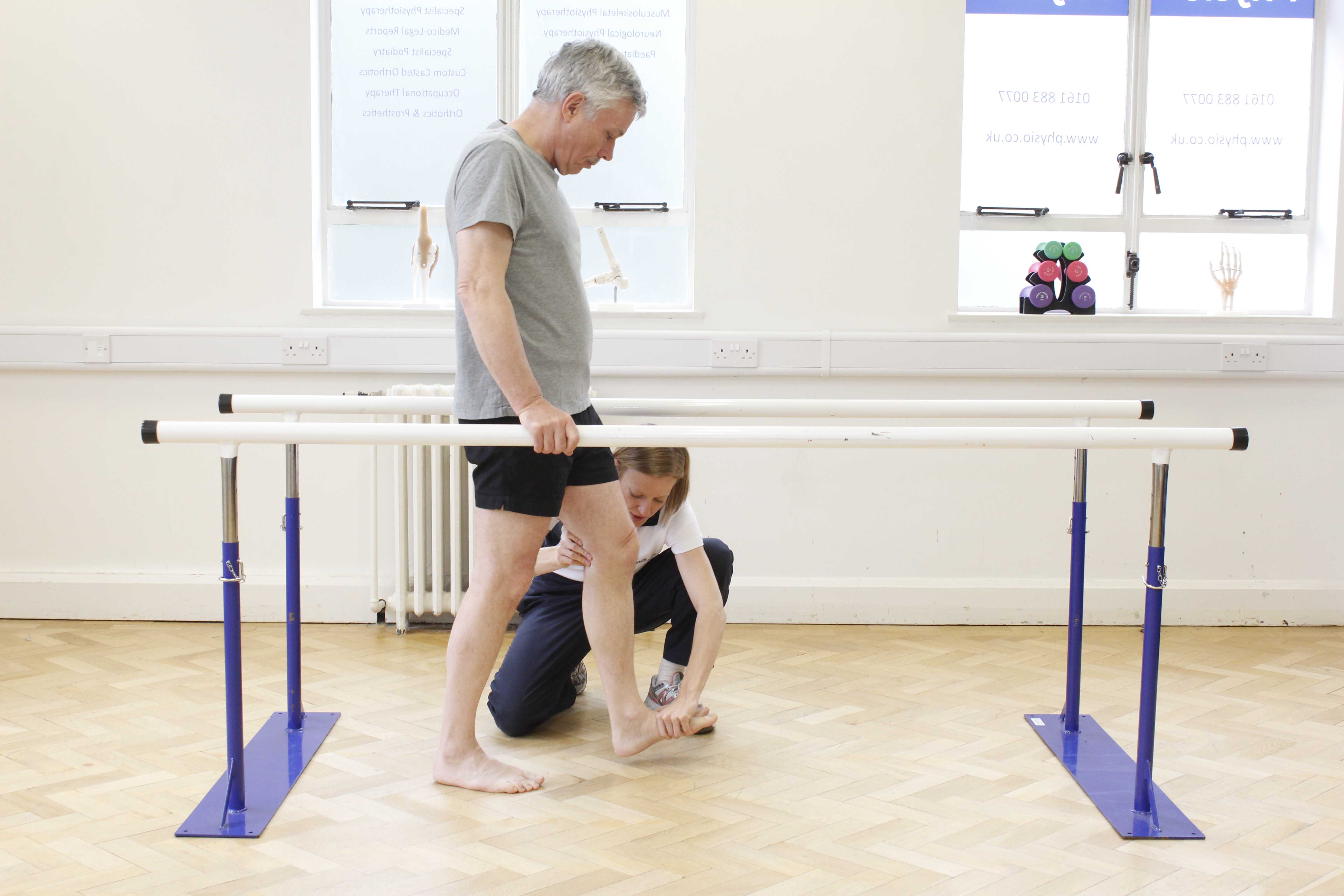What is a broken ankle?
A broken ankle (also known as a Pott’s fracture) is a break in one or more of the leg bones that form part of the ankle joint. The bones that are broken are the large bony lumps just beneath the skin on the inside and outside of the ankle. Physiotherapy is essential following a broken ankle.
How does a broken ankle happen?
A broken ankle commonly occurs if the foot and ankle are forcibly turned inwards or outwards. This is the mechanism that causes a sprained ankle but it can also fracture the bones of the ankle joint. You can also break your ankle on uneven surfaces or treading on a ball or opponent’s foot. A broken ankle can also occur if the foot is forcibly twisted on the leg, or vice versa.
 Above: Passive stretch of the achilles tendon performed by specialist therapist
Above: Passive stretch of the achilles tendon performed by specialist therapistWhat are the symptoms of a broken ankle?
The first sensation felt when you break your ankle occurs is immediate and intense pain in the ankle. You may also hear a snap or crack as the bone breaks. The ankle will become swollen and it is likely that you will be unable to put weight through your injured ankle. If the bones have moved in relation to each other, there may be an obvious deformity of the ankle. Other symptoms include:
What should I do if I have a broken ankle?
A broken ankle is a serious injury. You should go to your nearest accident and emergency department immediately.
What shouldn’t I do if I have a broken ankle?
To prevent further damage, you should not walk on your injured leg. You should also avoid activities that increase blood flow to the ankle and, therefore, swelling to the area. These include hot showers, heat rubs and the consumption of alcohol.
 Above: Functional exercises for the foot and ankle, guided by an experienced physiotherapist
Above: Functional exercises for the foot and ankle, guided by an experienced physiotherapistPhysiotherapy treatment for a broken ankle.
With a broken ankle you should go immediately to your nearest accident and emergency department. If the bones are in an acceptable position then your ankle will be casted. If the bones are not in a suitable position then surgery may be required to fixate the bones in their normal position. Your ankle will generally be in a cast for six to eight weeks.
The initial assessment with your physiotherapist is usually after you have had the cast removed. Physiotherapy should commence as soon as the cast is removed. If required, the physiotherapists at Physio.co.uk always endeavour to liaise with your surgeon throughout your rehabilitation. We work alongside many different orthopaedic surgeons and have experience in following numerous post-operative protocols.
Physiotherapy treatments may include:
Could there be any long-term effects from a broken ankle?
Most broken ankles heal in matter of months without complication. Some fractures, particularly those that do not have sufficient rehabilitation, cause longer-term effects. These effects include longer-term pain, stiffness and swelling in the ankle and an increased likelihood of developing arthritis of the ankle in later years.
To arrange a physiotherapy assessment call Physio.co.uk on 0330 088 7800 or book online.

 0330 088 7800
0330 088 7800

































